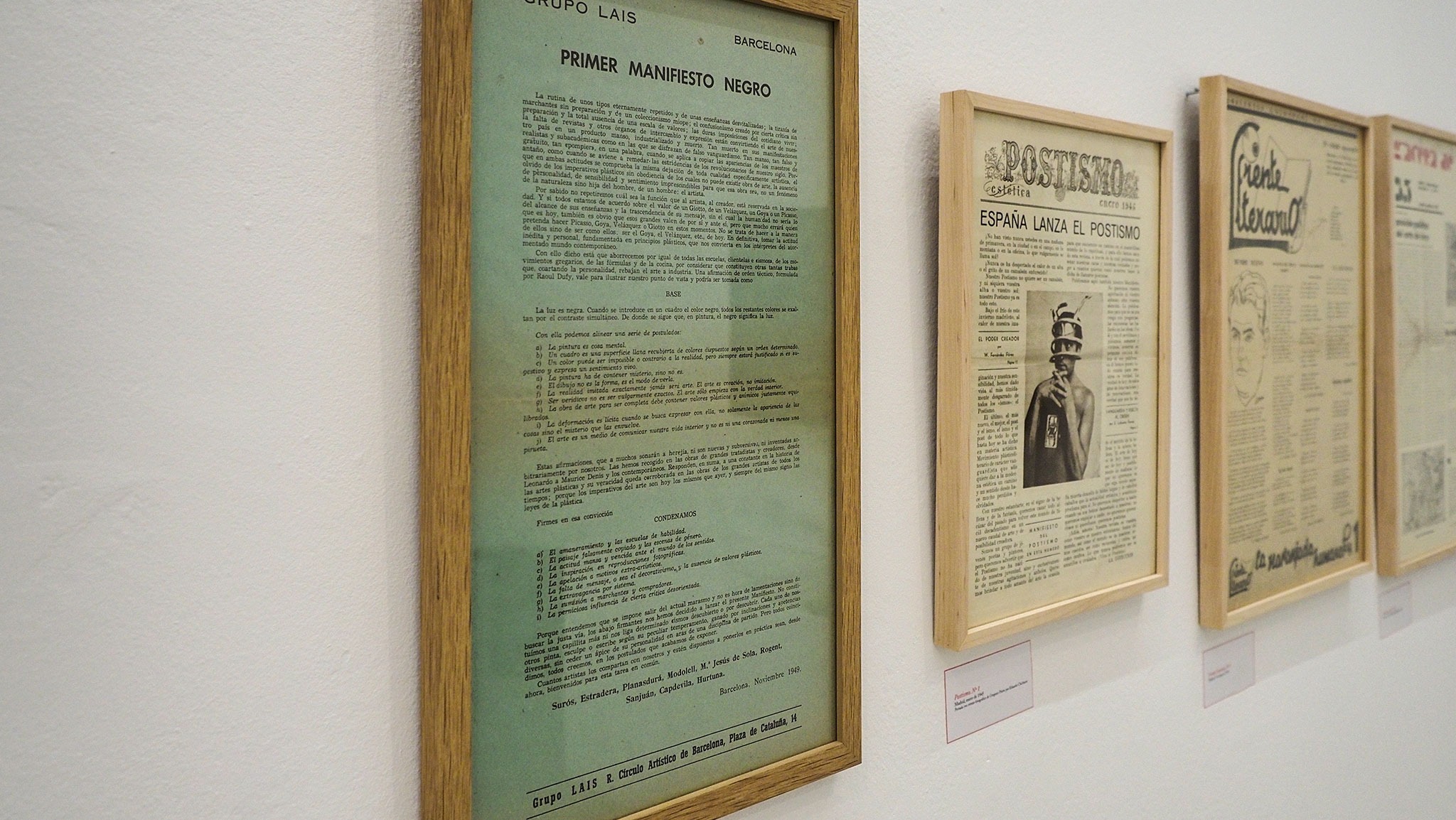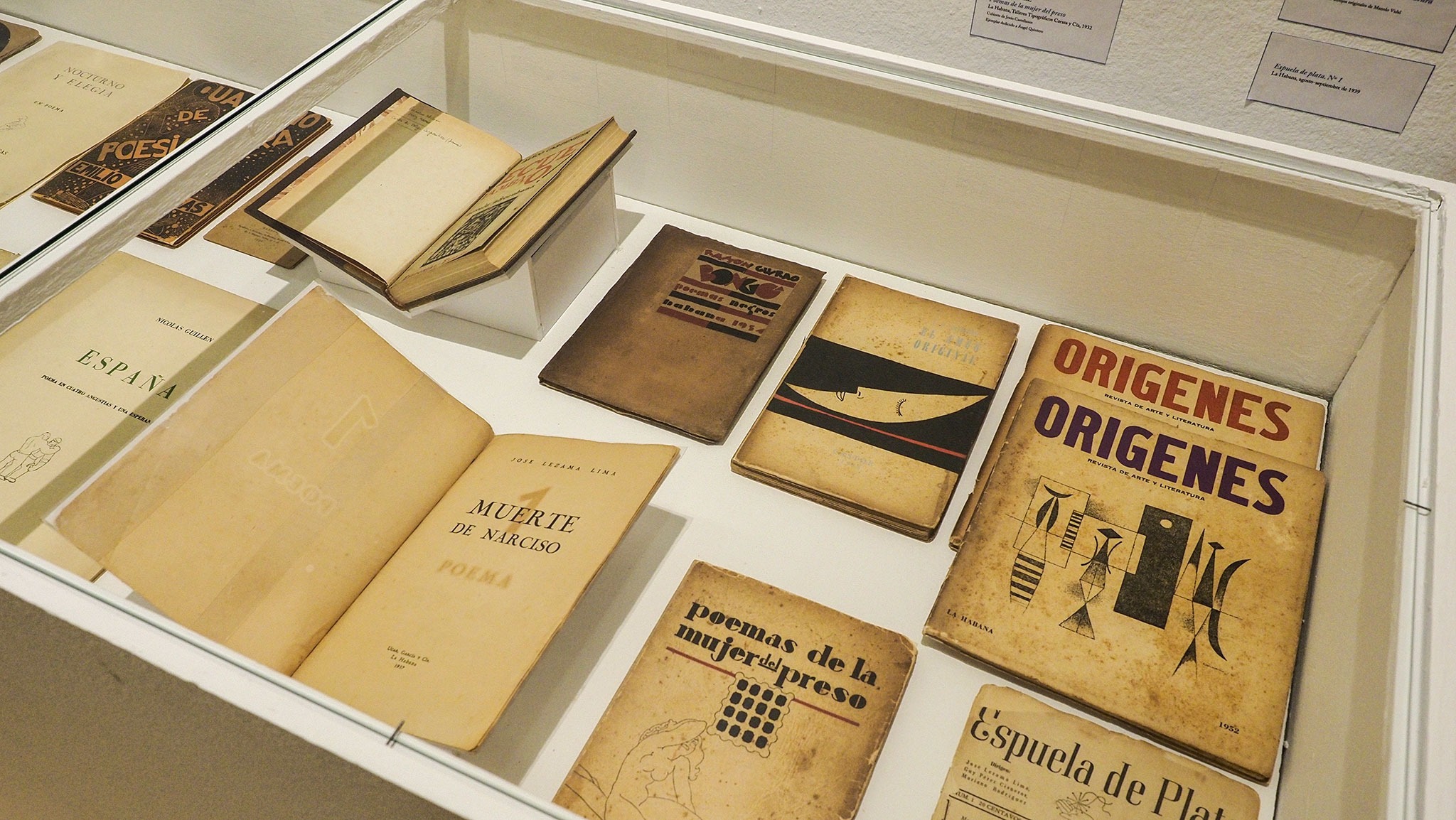
The exhibition offers a selection of Latin American and Spanish avant-garde poetry and art publications selected from the López Triquell bibliographic collection, which has been built up since the 1990s.
The exhibition presents nearly 500 publications ranging from books, magazines, and manifestos to other printed materials, accompanied by some manuscripts, letters, notebooks, photographs and works of art. Among them is a simple unpublished letter that Federico García Lorca wrote, during his stay in Argentina, to Delia Morcillo Capdevilla, wife of Arturo Capdevila (well-known Argentine poet, playwright, lawyer and historian).

This exhibition aims to take a trip back in time (1900/1970) and although the vast geographical area covered has meant that the exhibition has been divided by country for a better understanding by the public, the exhibition aims to reflect the similarities between countries, helping to create a collective memory of Latin America beyond linguistic unity.
In the section dedicated to Spain, books, manifestos and magazines featuring Ultraism and the Generation of 27 can be seen. In Argentina, the Criollismo movement and two rival groups stand out: the Grupo de Florida and the Grupo de Boedo. The first edition of two little-known poetry collections by Julio Cortazar and «Prisma» by Borges can also be seen. At the opening of the exhibition, Juan Manuel Bonet, art and literature critic and curator of the exhibition, explained that the magazine «Prisma» is one of the jewels of this exhibition: «The first testimony of how Borges imports to Buenos Aires the Ultraism learned in Madrid, Mallorca and Seville».

In the Uruguay series, the importance of women as creators of a new, innovative aesthetic stands out (Ida Vitale, Idea Vilariño and Cristina Peri Rosi). In Chile, Vicente Huidobro stands out, with more than fifteen of his publications on display, as he is undoubtedly the paradigm of the avant-garde writer and polemicist of the 20th century, an explorer of new aesthetic paths and a beacon for other authors. Peru will be widely represented by the work of César Vallejo, as well as by indigenous books with a great political commitment.
Colombia offers another of the great bibliographic rarities of the exhibition: "Suenan Timbres", by Luis Vidales. In the Central American region, the fundamental figure of Rubén Darío stands out, with his collection of poems ‘Azul’, a masterpiece of symbolism in the Spanish language. Another of the most prolific and interesting countries is Mexico, whose representation begins with the extremely rare book by José Juan Tablada, "Li-Po", of great importance for being the first book of calligrams in all of Latin America. From ‘Li-Po’ come the little bird feet that run along some of the walls of the exhibition as a game.
































![Auf Weiss II [On white II], 1923 Completed in Weimar, February-April 1923, Oil on canvas, 105 x 98 cm. Collection Centro Pompidou, Musée National d'Art Moderne, París. Legacy of Nina Kandinsky en 1976. © Vassily Kandinsky, VEGAP, Madrid, 2015 Auf Weiss II [On white II], 1923 Completed in Weimar, February-April 1923, Oil on canvas, 105 x 98 cm. Collection Centro Pompidou, Musée National d'Art Moderne, París. Legacy of Nina Kandinsky en 1976. © Vassily Kandinsky, VEGAP, Madrid, 2015](/sites/default/files/styles/mopis_home_news_category_slider_desktop/public/images-lead/metalocus_Kandinsky_mCC_07.png?h=4d0904e3&itok=GTDnt8C3)







